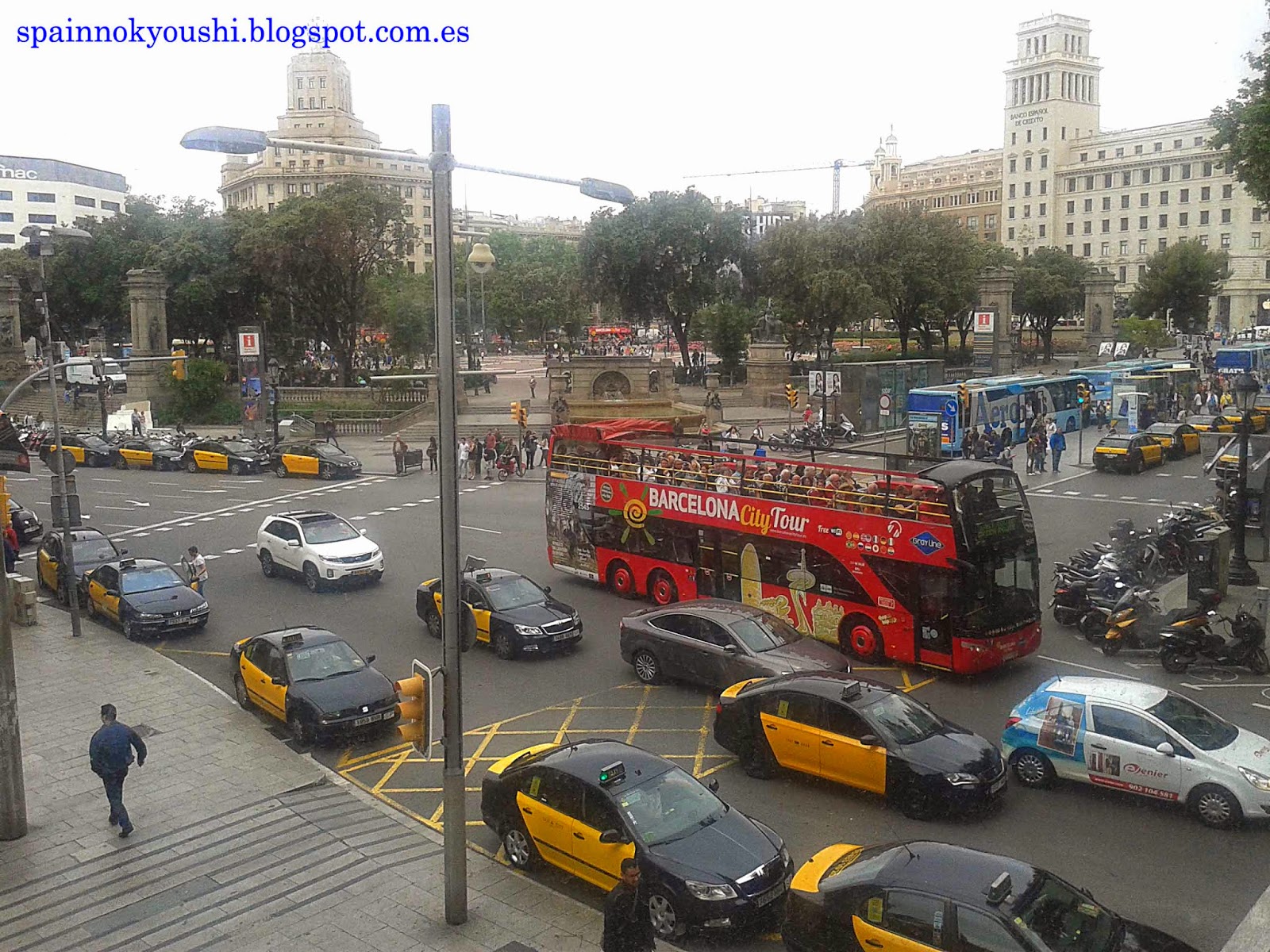僕はバルセロナがだんだん好きじゃなくなってきている。1992年の五輪以降、バルセロナは年々、退屈で、閉鎖的で、ただテーマパークに行く感じでここを訪れる人たちに対してだけは開放的な都市になりつつあるような気がする。志摩スペイン村の方がずっとましだ。大量の観光客を受け入れるための悲しいテーマパーク、バルセロナは、テーマパークであることを売りにする志摩スペイン村とは逆に、『本物』であることを売りにしようとしているのでずっとタチが悪い。
町は本物でなければならないと言いいたいわけじゃない。バルセロナのゴシック地区は観光客を引き寄せるために作られた20世紀の産物だが、そういう町は他にもたくさんある。ネットで調べてみたら、アグスティン・コカラ・ガントという人が2011年に発表した博士論文を見つけた。それなりの物議をかもしたらしいが、要約はかなり興味深かった。
バルセロナのゴシック地区。国のシンボルからテーマパークへ
バルセロナのゴシック地区は、20世紀に建設された。事実、この地名は近代生まれたもので、この辺りは伝統的にカテドラル地区と呼ばれていた。周辺の歴史的建造物は古いと言われているが、実際に作られたのは近代である。バルセロナの歴史地区を中世化することで、かつては存在しなかった新しいシンボル、古い外観を備えた新しい町が出来上がったのだ。
この歴史地区形成プロジェクトは当初、地元のブルジョワジーがカタルーニャ建築を世に広める目的で進められてきたのだが、実際は、改築していようがいまいが古い外見の建物が好まれる観光のおかげで町に新たな収入が生まれる結果となった。同文献は、町の過去が政治的に利用され、いわゆる都市マーケティングにより、観光客を引き寄せ他の都市ブランドと競争するために商品化されていく現象を分析している。
僕がバルセロナをまだ好きだったころ、たとえ本物でなくてもゴシック地区は存在していた。それでも、昔の人々は自虐的ジョークを楽しむ余裕があった。たとえば、Casa
de l’Ardíaca(アルディアカ邸)の修復師は、スーツとネクタイ姿の人物をかたどったゴシック様式の彫刻を残している。今の人々は、自分たち自身が作り上げたイメージをやみくもに信仰しているだけなのかもしれない。
Barcelona, parque temático.
Barcelona cada
vez me gusta menos. Creo que desde los Juegos Olímpicos de 1992, se ha ido
convirtiendo poco a poco en una ciudad aburrida y provinciana, cerrada en sí
misma y abierta solo a los visitantes que utilizan la ciudad como si fuera un
parque temático mucho peor que Shima Spain Village, porque se ha convertido en eso:
un triste parque temático para turismo en masa que, al contrario que el parque
temático de Japón, pretende convencernos de que es un sitio auténtico.
No digo yo que
las ciudades tengan que ser auténticas. Seguro que hay muchas otras ciudades
como Barcelona, cuyo Barrio Gótico es una recreación del siglo XX para atraer a
los turistas. Buscando información sobre el tema, encontré en internet una tesis doctoral de Agustín Cócola Gant de 2011 que ha generado cierta polémica,
cuyo resumen es muy interesante:
El
Barrio Gótico de Barcelona. De símbolo nacional a parque temático
El Barrio Gótico de Barcelona fue
construido en las décadas centrales del siglo XX. De hecho, su nombre también
es una creación moderna, ya que tradicionalmente el espacio era conocido como
barrio de la Catedral. Aunque en teoría los monumentos históricos nos remiten a
épocas pasadas, en muchos casos han sido fabricados recientemente. La
medievalización del centro histórico de Barcelona transformó físicamente el
barrio institucional de la ciudad, dotándolo de nuevos significados simbólicos
y de una apariencia antigua que hasta entonces no poseía.
Pero si en un principio la
monumentalización de la ciudad histórica fue un proyecto de la burguesía local
con el fin de exhibir la arquitectura nacional catalana, en la
práctica las obras sólo pudieron justificarse por los ingresos que generaría el
nuevo turismo urbano, el cual gusta de contemplar edificios de apariencia
antiguos, sean o no originales. Por lo tanto, el texto analiza el uso político
del pasado y su posterior conversión en una mercancía cualquiera, enmarcando el
análisis dentro del llamado «marketing urbano», cuyo objetivo es crear marcas
con las ciudades para posicionarse en el mercado internacional que compite por
la atracción de inversiones y turistas.
Cuando Barcelona
aún me atraía, el Barrio Gótico, por falso que fuera, ya existía, pero
entonces, quiero creer que todavía manteníamos la capacidad de reírnos un poco
de nosotros mismos, como el restaurador de una de las ventanas de la Casa de
l’Ardíaca, que tuvo la humorada de esculpir una figura gótica de una
personaje…con traje y corbata. Nos estamos volviendo fanáticos de la imagen de
nosotros mismos que nosotros mismos hemos creado.
Barcelona, a theme park.
I like Barcelona less and less. I think that
Barcelona, since the 1922 Games has become little by little a boring and
provincial city, closed in itself and open only to those visitors who use it as
a theme park, a worse place than Shima Spain Village in Japan, because that is
what it is now: a sad theme park for mass tourism which, in contrast with the
Japanese them park, pretends it is genuine.
I am not saying that cities must be authentic. I am
sure that there are many other cities like Barcelona, whose Gothic Quarter is a
20th century recreation to attract tourism. Looking for information
about the subject, I found in the internet a very interesting doctoral thesis by Agustín Cócola Gant from the year 2011 that generated some controversy. I
find the abstract highly interesting:
The
Barcelona Gothic Quarter. From national symbol to theme park
The Barcelona Gothic Quarter was built in the
twentieth century. Although theoretically, the historic monuments reference
past epochs, in many cases they were constructed recently. The beginning of the
monumentalization of the historic city was a local bourgeoisie project to
promote national Catalan architecture, but the redevelopment was self-financing
from increased income generated from urban tourism with its appreciation of
buildings with an ancient appearance, irrespective of whether they are
original. This article analyses the political use of the past and its
subsequent commoditisation alongside city marketing, whose aim is to create a
distinctive brand for the city in the international tourism market so that it
successfully competes for tourism and inward investment.
When I still felt attracted by this city, the Gothic
Quarter, even though it was false, already existed, but then, I want to believe
that we still were able to laugh a bit at ourselves, like the 20th
century artist who restored the windows of Casa de l’Ardiaca palace and had the
sense of humour of create a gothic style figure…with suit and a tie. We are
becoming fanatics of an image of ourselves which is our own creation.




0 件のコメント:
コメントを投稿